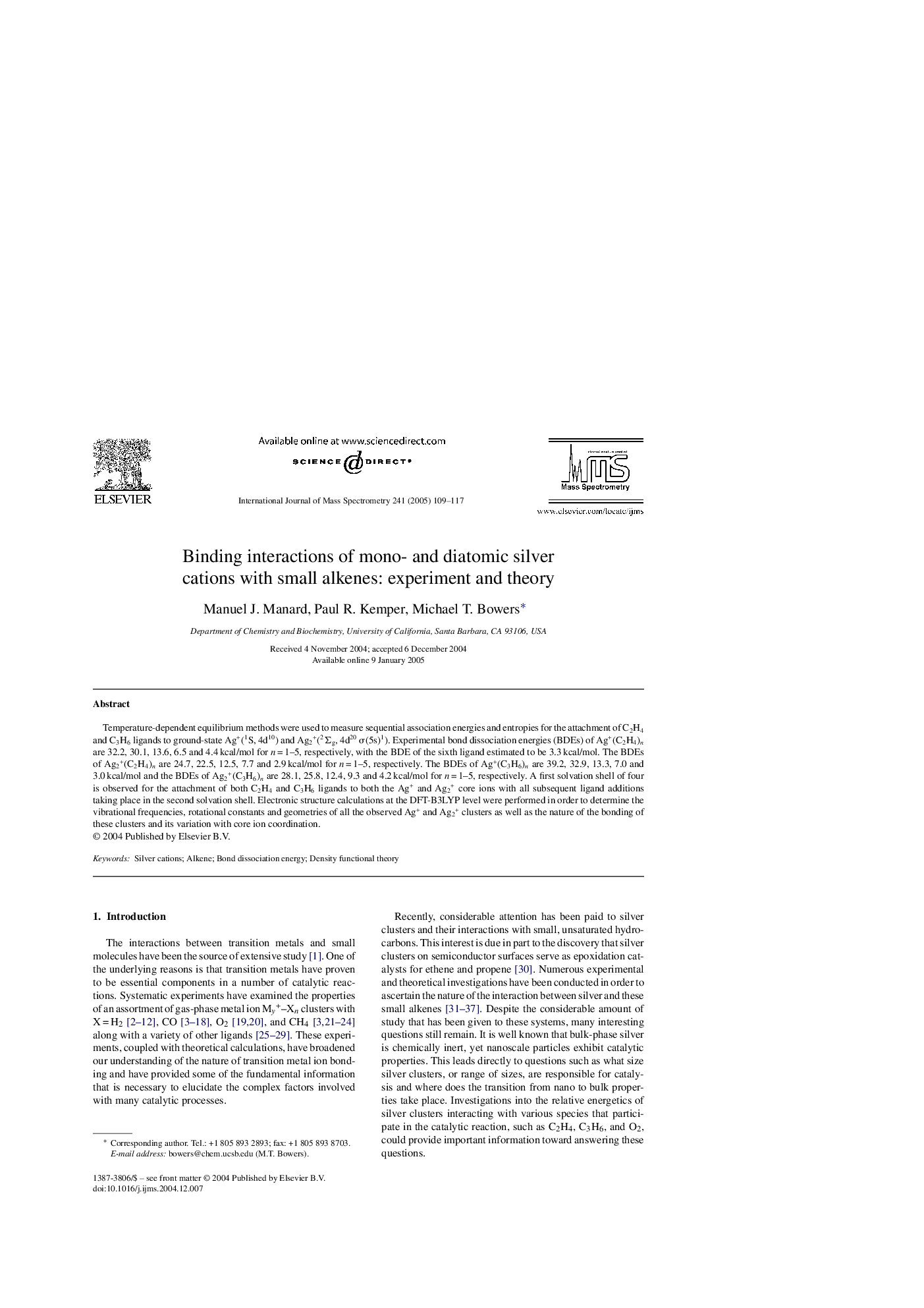| Article ID | Journal | Published Year | Pages | File Type |
|---|---|---|---|---|
| 9746750 | International Journal of Mass Spectrometry | 2005 | 9 Pages |
Abstract
Temperature-dependent equilibrium methods were used to measure sequential association energies and entropies for the attachment of C2H4 and C3H6 ligands to ground-state Ag+(1S, 4d10) and Ag2+(2Σg, 4d20 Ï(5s)1). Experimental bond dissociation energies (BDEs) of Ag+(C2H4)n are 32.2, 30.1, 13.6, 6.5 and 4.4 kcal/mol for n = 1-5, respectively, with the BDE of the sixth ligand estimated to be 3.3 kcal/mol. The BDEs of Ag2+(C2H4)n are 24.7, 22.5, 12.5, 7.7 and 2.9 kcal/mol for n = 1-5, respectively. The BDEs of Ag+(C3H6)n are 39.2, 32.9, 13.3, 7.0 and 3.0 kcal/mol and the BDEs of Ag2+(C3H6)n are 28.1, 25.8, 12.4, 9.3 and 4.2 kcal/mol for n = 1-5, respectively. A first solvation shell of four is observed for the attachment of both C2H4 and C3H6 ligands to both the Ag+ and Ag2+ core ions with all subsequent ligand additions taking place in the second solvation shell. Electronic structure calculations at the DFT-B3LYP level were performed in order to determine the vibrational frequencies, rotational constants and geometries of all the observed Ag+ and Ag2+ clusters as well as the nature of the bonding of these clusters and its variation with core ion coordination.
Related Topics
Physical Sciences and Engineering
Chemistry
Analytical Chemistry
Authors
Manuel J. Manard, Paul R. Kemper, Michael T. Bowers,
